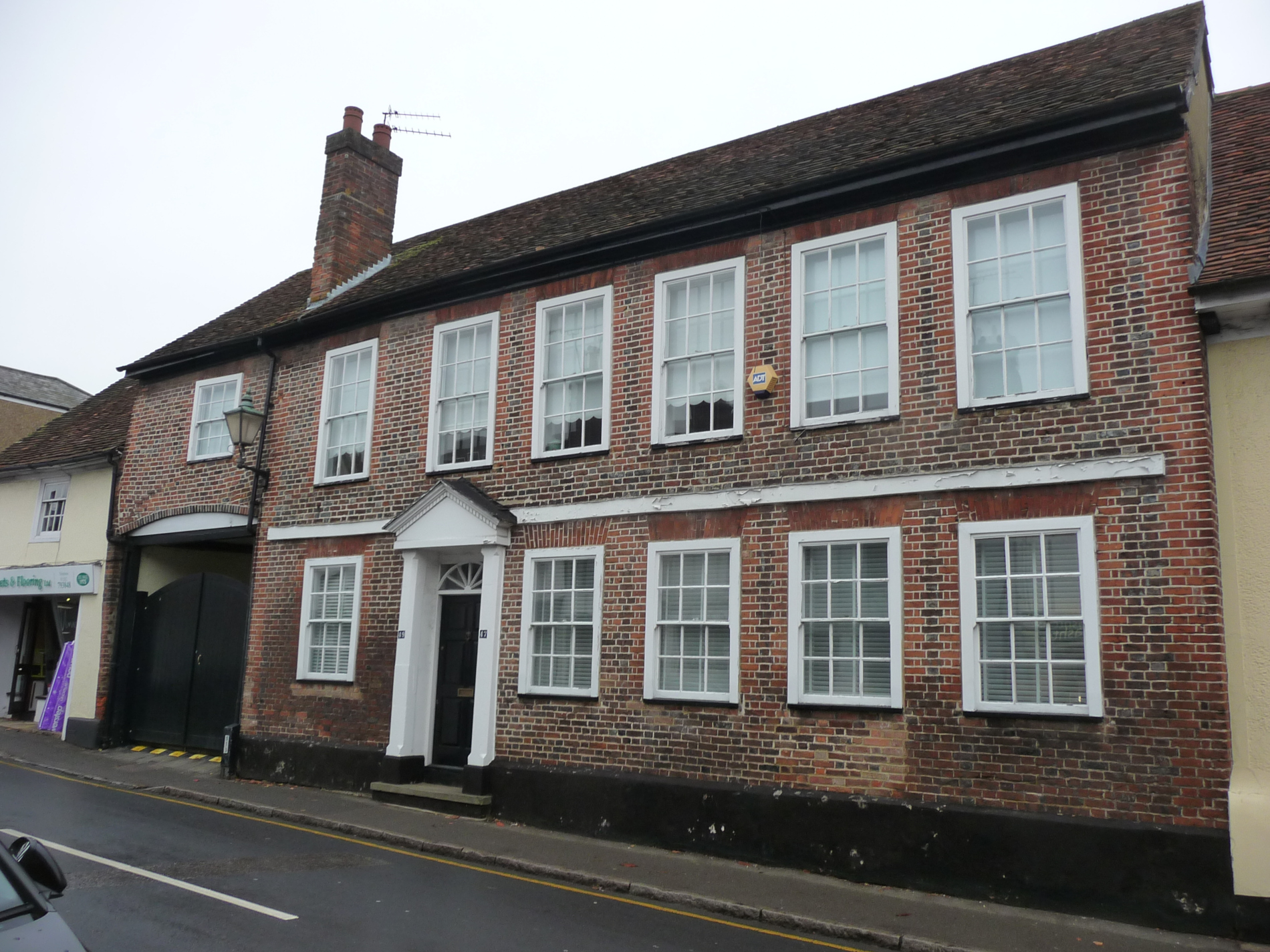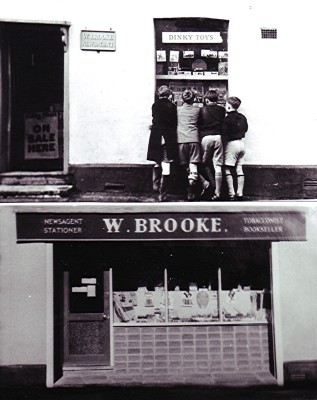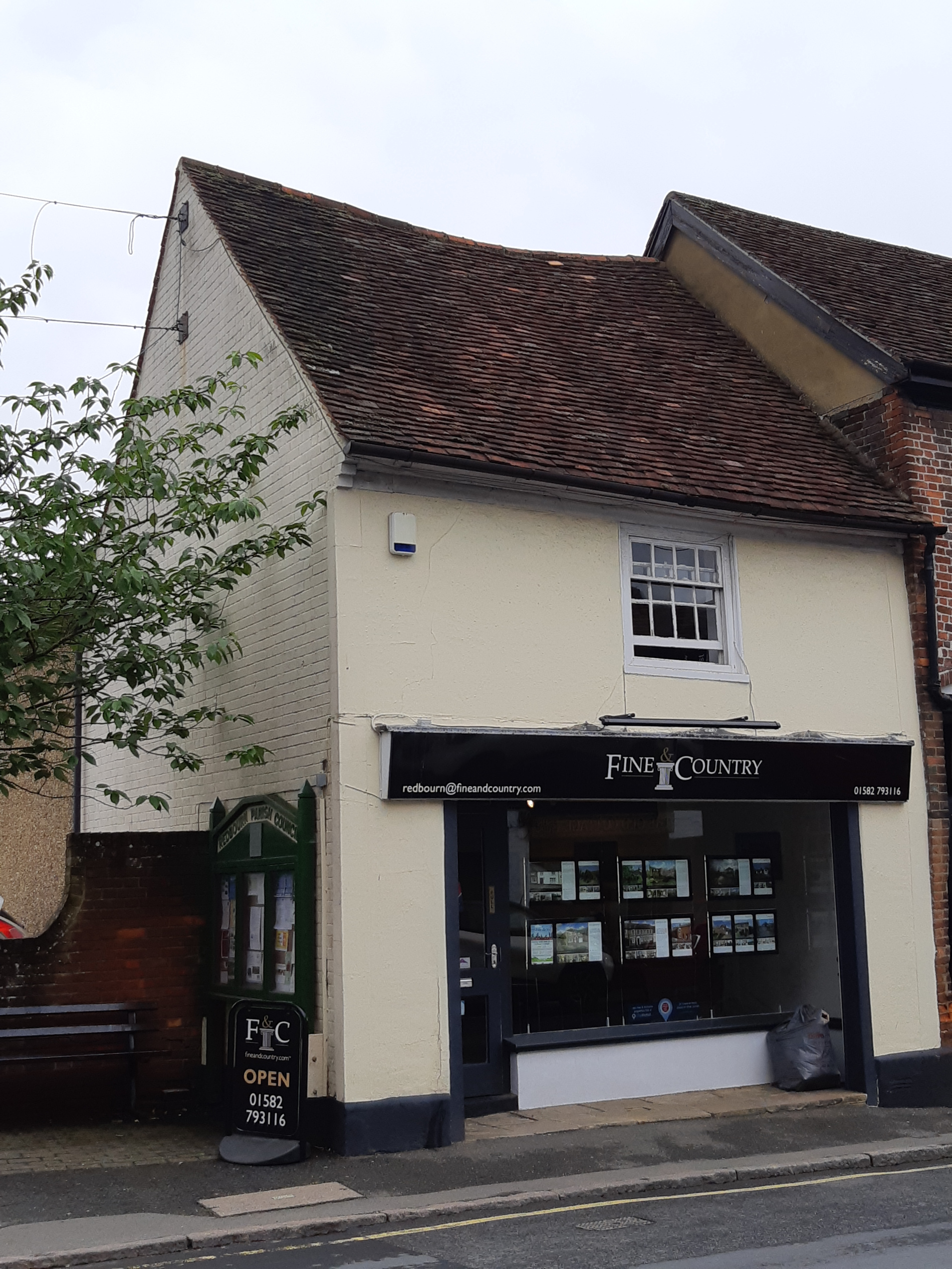High St. Nos. 47, 49 and 51. The White Horse / Brockway

This house and shop was built as an inn during the 16th century. In the 18th century it was fronted with brown brick with attractive red dressing and brick lintels. The roof is of plain tile with wooden eaves band. The windows are modern but sit within the original openings. The northernmost window on the first floor sits over a broad segmental-headed coach entrance which has a 16th century ceiling and exposed wall timbers.
The earliest reference to the licensee of the inn is in 1574 – Nicholas Fynch, he remained there until 1603. In the early 17th century it was owned by Robert Whitley, who sold it in 1646 to Richard and Elisabeth Miles. By 1675, the copyholder was James Hannell, then in 1684 Mrs. Ellis. It continued to trade with some success (1753 tax assessment £1 0s 0d, but by 1785 it was £2 4s 8d) in the 18th century and was used to billet soldiers, having six beds and stabling for ten horses. In 1800 a Friendly Society was registered there. The St Albans brewery took it over in 1812 (innkeeper Charles Charlton). Business began to decline in this century, though three stage coaches stopped at the inn (Royal Mail – Derby / London, Express –Leeds / London, Defiance –Manchester / London.). This service stopped as the coaches failed to match the speed and comfort of the railways and in 1840 the stables and coach house behind the inn were demolished during the ownership period of the Kinders. William Abrahams was the last innkeeper (around 1870), by 1881 it was known as ‘Brockway’, the property of Joseph Ayre (surgeon). Between 1934 and 1939, it became a boarding house run by Mr. and Mrs. Davenport. It is now in private hands and restored in the 1970’s
The interior of No.51 was sympathetically restored and wall and ceiling timbers were exposed. Also inside at the front, the timber framing for the jettied first floor was exposed. At the rear of the main building there is an 18th century hipped roof projection. There is a long 17th-18th century painted brick and timber framed stable block at the side, this is now a shop, but has been used as a gallery and antique showroom. It was linked to the main building by a bedroom.

The top photograph shows the shop window around 1950 when it was a toy shop. By 1952, (the lower photograph) it had become a stationers and newsagents, run by Bill Brooke. Until recently it was a carpet shop but is now an estate agent.
